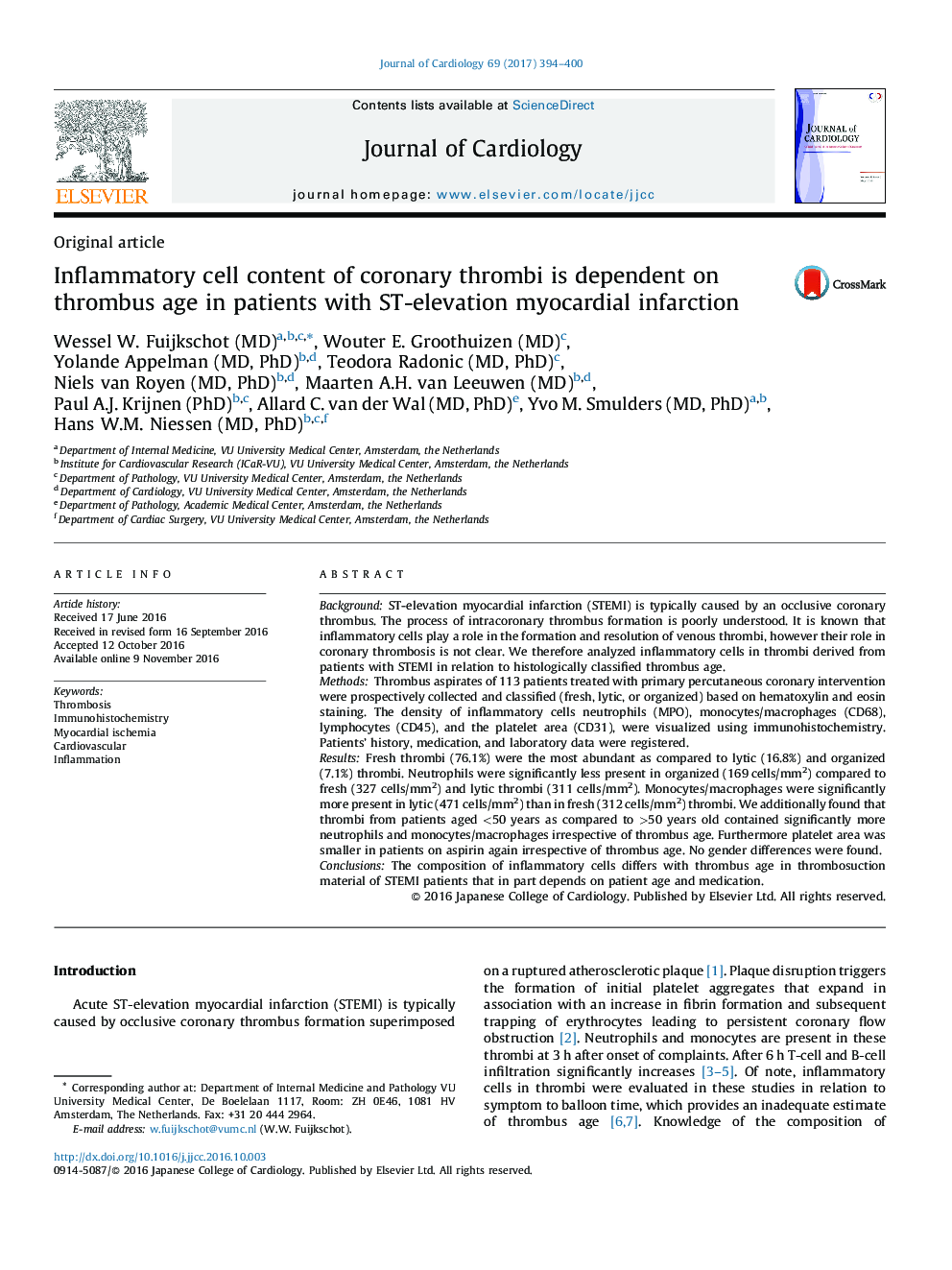| Article ID | Journal | Published Year | Pages | File Type |
|---|---|---|---|---|
| 5614770 | Journal of Cardiology | 2017 | 7 Pages |
BackgroundST-elevation myocardial infarction (STEMI) is typically caused by an occlusive coronary thrombus. The process of intracoronary thrombus formation is poorly understood. It is known that inflammatory cells play a role in the formation and resolution of venous thrombi, however their role in coronary thrombosis is not clear. We therefore analyzed inflammatory cells in thrombi derived from patients with STEMI in relation to histologically classified thrombus age.MethodsThrombus aspirates of 113 patients treated with primary percutaneous coronary intervention were prospectively collected and classified (fresh, lytic, or organized) based on hematoxylin and eosin staining. The density of inflammatory cells neutrophils (MPO), monocytes/macrophages (CD68), lymphocytes (CD45), and the platelet area (CD31), were visualized using immunohistochemistry. Patients' history, medication, and laboratory data were registered.ResultsFresh thrombi (76.1%) were the most abundant as compared to lytic (16.8%) and organized (7.1%) thrombi. Neutrophils were significantly less present in organized (169Â cells/mm2) compared to fresh (327 cells/mm2) and lytic thrombi (311 cells/mm2). Monocytes/macrophages were significantly more present in lytic (471 cells/mm2) than in fresh (312 cells/mm2) thrombi. We additionally found that thrombi from patients aged <50 years as compared to >50 years old contained significantly more neutrophils and monocytes/macrophages irrespective of thrombus age. Furthermore platelet area was smaller in patients on aspirin again irrespective of thrombus age. No gender differences were found.ConclusionsThe composition of inflammatory cells differs with thrombus age in thrombosuction material of STEMI patients that in part depends on patient age and medication.
